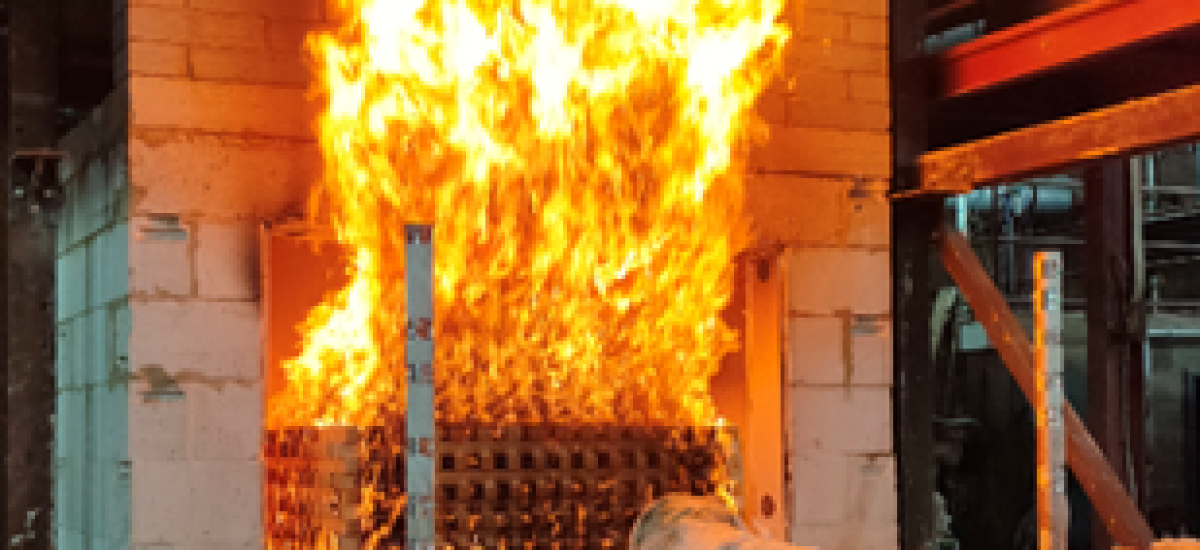20/4/2021
Efectis has recently carried out a series of tests to evaluate the fuel source to develop a method harmonized at European level to assess the fire performance of façade.
Since different parameters are used such as the amounts of fuel, type of fuel, shape of combustion chamber, and the ventilation conditions, and since extremely limited data is available on the heat exposure of the test specimen, it is not possible to compare the different test methods. Therefore, the choice has been made to keep the heat source and all related specifications as per BS 8414 series and DIN 4102-20.
The heat source has been installed into the same combustion chamber so that the impact of such environment on the fire behaviour is considered. To assess the influence of the system on the facade, a portion of non-combustible facade was installed above the combustion chamber.
To ensure that the selected method has good enough repeatability and reproducibility, the test programme investigated variations in the main parameters as described below:
- Effect of the environment.
- Tolerances needed for the fuel source.
- Species of wood
- Density of the wood (kg/m3)
- Moisture content (%)
- Ventilation of the wood crib
- Chamber volume
- Surface finish
- Measurement of the heat exposure of the test specimen.
For each test, a series of measurements and calculations have been performed to characterise each crib:
- The exposure period(s).
- The temperature inside the combustion chamber (°C).
- The temperature above the opening of the combustion chamber (°C).
- The temperature at 1m in front of the wood crib (°C).
- The heat release rate (kW).
- The mass loss (kg).
- The heat flux at 1m in front of the wood crib (kW/m²).
- The total heat release (MJ).
The main purpose of these tests was to obtain an answer to several questions, allowing the assessment method to be finalised before the experimental round-robin starts.
Contact: Talal Fateh – talal.fateh@efectis.com

